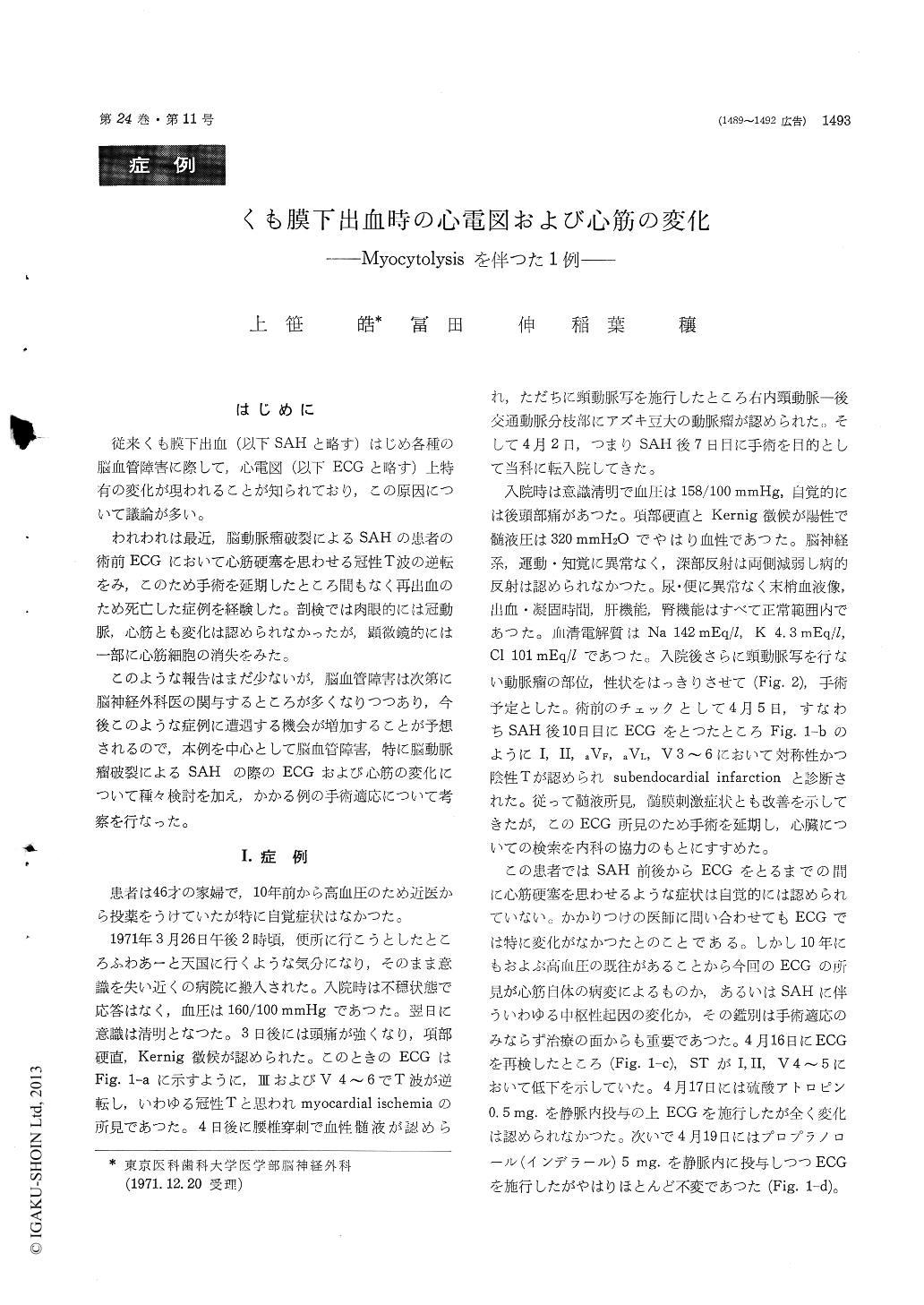Japanese
English
- 有料閲覧
- Abstract 文献概要
- 1ページ目 Look Inside
はじめに
従来くも膜下出血(以下SAHと略す)はじめ各種の脳血管障害に際して,心電図(以下ECGと略す)上特有の変化が現われることが知られており,この原因について議論が多い。
われわれは最近,脳動脈瘤破裂によるSAHの患者の術前ECGにおいて心筋硬塞を思わせる冠性T波の逆転をみ,このため手術を延期したところ間もなく再出血のため死亡した症例を経験した。剖検では肉眼的には冠動脈心筋とも変化は認あられなかったが,顕微鏡的には一部に心筋細胞の消失をみた。
A 46 year old female had an onset of subarachnoid hemorrhege due to a ruptured internal carotid-posterior communicating aneurysm on the right (Fig. 2). Electrocardiogram 2 days after the onset suggested myocardial ischemia, and when taken 10 days after, ECG showed subendocardial infarction Fig. 1-a, b and c). No responses to the intravenousadministration of Atropin sulfate or Propranolol (Inderal) suggested the non-particitation of sympa-thetic and/or parasympathetic nerves to the electro-cardiographic changes (Fig. 1-d).
She died of rebleeding before operation and autopsy was performed. Microscopical examination revealed focal myocytolysis and no change of coronary arteries was found (Fig. 3).
It would be possible to conclude that the myo-cardial damages were sequelae of autonomic disturb-ance due to subarachnoid hemorrhage. Then, a possibility of protection and treatment of myocar-dial damage by anticholinergic and antiadrenergic angents is discussed.

Copyright © 1972, Igaku-Shoin Ltd. All rights reserved.


